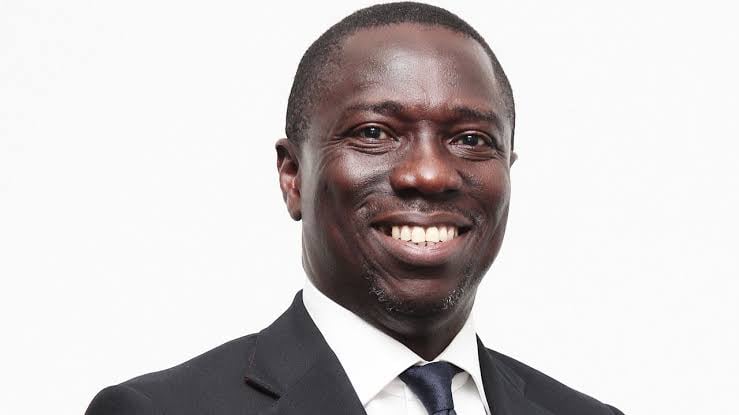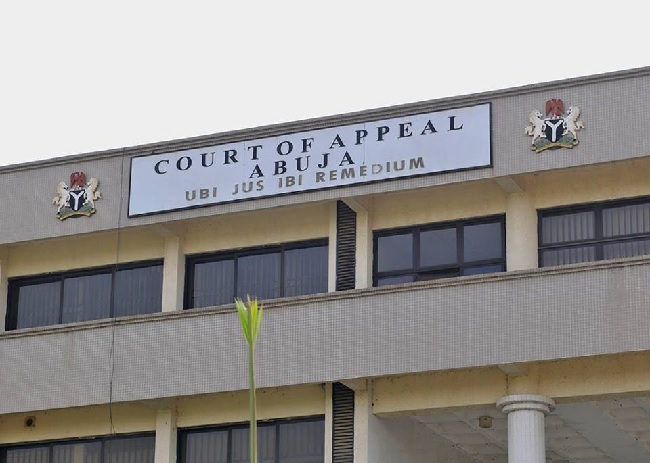
Foundation laying ceremonies took place in Ilaro, Ogun West, where Governor Amosun said the model school projects were part of his commitment to restoring the glory of education in the state through providing affordable and qualitative education. “Every child in Ogun will have the opportunity to get the best of education and compete with their friends anywhere,” Amosun had assured. The next port of call was Abeokuta, where he similarly boasted that the 26 model schools would be fitted with “unparalleled facilities in science, technical education, agriculture, humanities, enterprise, and sports, with full boarding facilities… that will define the new Ogun standard in the provision of education at the secondary level.”
As he said: “It is an ambitious educational programme, which will touch all of the 20 local government areas of the state. It is envisaged that these model schools will produce students who can compete with their peers anywhere in the world.” And they would be delivered in one year. Thereafter, he started planting the schools in quick succession. But by 2019 when he left office and seven years after the promise, only 15 of such facilities had been embarked upon.
“Of the 26 Model Schools project, only 15 were traceable,” writes Peter Moses. They are Model School at Ikenne, named after HID Awolowo; Prof. T.O. Ogunlesi Model School Ogijo, Sagamu LG; Femi &DotunOyewole Model School, Kobape, Abeokuta South LG; Prof. SanyaOnabamiro Model School, Ago Iwoye, Ijebu North; Akin Ogunpola Model School, Akinale, Ewekoro LG; S.A. Opaleye Model, Ado-Odo/Ota LG. Others are Model School IteleIjebu, Ijebu Ife, Ijebu East LG; Model School Ijebu Ode, Epe Road, Ijebu-Ode LG; Model School OwodeEgba, Obafemi/Owode LG; Model School Ifo, Ifo LG; Model School Idi Aba, Abeokuta LG; Model School Onijangangan, Abeokuta North LG; Model School Isara Remo, Remo North LG; Model School Ilaro, Egbado South LG and Model School Idiroko, Ipokia LG.
Instead of the project spreading across the 26 states constituencies, “two out the 15 projects were sited in one local government area, while there are no projects in about six local government areas, contrary to the original plan. “Odeda, Ijebu North East, ImekoAfon, Egbado North and Odogbolu LGs didn’t benefit from the project. What happened to the remaining 11 for which funds were fully disbursed?” asked a former Vice-Chancellor of Tai Solarin University of Education Ijagun, Prof Kayode Oyesiku, adding: “None of them was functional for eight solid years and each of them was estimated to be almost N1.5bn. N2bn given to secondary schools in each local government will turn it around remarkably. So, the previous administration never thought it seriously fixing education right from the primary to the secondary.”
Similarly, an Associate Professor of Education Management, Hammed Adeyanju, said to discerning minds, Amosun merely embarked on “white elephant” projects when most of “our primary and secondary schools …are nothing to write home about.” He noted that it was not only in the education sector that Amosun had indulged in blind wastage of public funds. Beyond the sad state of the model schools, many other public schools remain in shambles across the state. A visit to some public schools showed that many were still in poor conditions, with dilapidated structures and poor surroundings as at May 29, 2019. The building had become dens of miscreants and were overgrown with weeds. To underscore the shallowness in conception and lack of due process in execution, many did not move beyond groundbreaking.
“Structures and equipment lying fallow…Amosun embarked on the projects he was unable to complete. They are white elephant projects. Look at the overhead bridges, Model Schools and what have you. The incumbent government can only complete the project and make use of it if it tallies with its priority. The present governor has his own plans. If that is going to jeopardise his plan, he may abandon it. The advice to the present government, because government is a continuum, is to try their best to complete the projects and make use of them. ”
But this is in consonance with the thrust of the Dapo Abiodun administration. Within the first 100 days, Governor Abiodun remodeled one of the moribund model colleges into tech hubs to drive digitisation in the state in the state capital. He restructured another at Ikenne into a 128-bed Isolation and Treatment Centre for COVID-19 and yet another one at Ogijo, Sagamu, was fully deployed as a state-owned secondary school with a boarding facility. Like the Model Schools, several capital projects wasting away have been recreated and their forms changed or converted to uses that will have direct socio-economic benefits on the residents of the state. Speaking about the abandoned projects, Governor Abiodun, during his inauguration, had hinted on re-assessing all on-going and abandoned projects in the state with a view to determining “the potential benefits to the state and our people and the priority that should be attached to each project.”
He said: “We will identify all dormant assets of the state, their locations and how they could be deployed to support the vision of economic development and individual prosperity of our people.” On another occasion, he had argued that “these projects were funded by taxpayers’ money and it won’t be financially wise to abandon such projects. We learned that some of these projects were awarded and started at the twilight of the last administration, why it was so, we don’t know.”
Infrastructure, especially roads, took the lion share of the project completion and modification, the governor said while inspecting some ongoing road projects in the Sagamu, Abeokuta South and Odeda local council areas of the state. His Commissioner for Information, Waheed Odusile, named the abandoned roads that Gov. Abiodun had rehabilitated to include the Brewery-Olomore Road of Abeokuta, Lafenwa-Rounda Roads and Kuto bridge in the State Capital.
“About four or three years ago, the bridge had not been completed. Today, the bridge has been completed and the link roads. It was the last administration that awarded Panseke-Adigbe road and today that road has been completed and commissioned by Governor Dapo Abiodun. The same thing goes for Lafenwa-Rounder. As I am talking to you, Lafenwa-Rounder road is gulping a lot of money; works are going on. It was awarded by the last administration. The present administration did not abandon it but proceeded with the construction. Mokola bridge was not completed by the last administration, but it is under construction right now,” Odusile said.
The icing on the cake, he said, is the Agro-Cargo Airport that was abandoned for 14 years but has been turned into an aerotropolis. The State Commissioner for Works and Infrastructure, Ade Akinsanya, added that the State was equally carrying the burden of paying compensation for needless liabilities incurred on some road expansion, besides the facts that they are being completed. He said: “The demolitions carried out by the Amosun administration were unnecessary, and ended up compounding the problems being faced by the present government. The Abiodun administration inherited outstanding debt of N202billion from the Amosun government on roads alone. By contrast, the Abiodun government has a no-demolition policy, except where necessary and unavoidable. For instance, while the Amosun government had marked some houses for demolition on the Kemta-Somorin road in Abeokuta, the Abiodun government has built the road without any demolition. It is actually not necessary to demolish while constructing roads, unless it is actually unavoidable. The same thing applies to bridge construction. Most of the bridges constructed by that regime were a waste of resources.”
Although, Bola Adeyemi of Amosun’s Media Office declined to comment on the changing faces of his principal’s projects, saying “All I can say is that I have no comment,” weeks to his departure, another of Amosun’s protégé had predicted that sustaining Amosun’s legacies was an inescapable reality, adding that “it will amount to a disservice to Ogun State if lofty projects yet to be completed by the outgoing governor are abandoned.”
Perhaps, he was right because Gov. Abiodun has “not in the name of political vendetta, rubbished or jettisoned,” what he called “Amosun’s legacies.” Fortuitous circumstance has brought a Governor whose ego is not as tall as Amosun’s caps!












